Search results for 'layer'
-
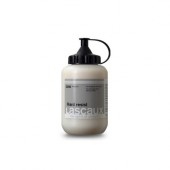
Lascaux Hard Resist 500ml
£45.60This resist is painted onto the plate in a thin even layer with a soft flat square-ended brush. When this clear layer is dry it may be coloured or drawn into with etching needles, roulettes and steel wool. The waxy character allows the needle to glide through its surface. After drawing the coloured coating (if used) is removed, the image is stopped out if necessary, then the plate is etched. As the resist is clear the artist can monitor the etching process accurately. Learn More -
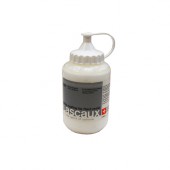
Lascaux Coloured coating for Hard Resist
Starting at: £38.70
These black or white coatings may be painted onto a dry layer of Hard resist so that the drawing made with etching tools is highly visible. The coloured coatings are not acid-resistant and are designed to be washed away with water before the plate is stopped-out or etched. Learn More -
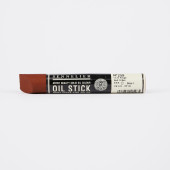
Sennelier Oil Sticks
Starting at: £7.65
Solid artists' quality oil paint sticks. (Ø = 3/4 ; length = 5" ) SENNELIER Extra-Fine Solid Oil Sticks can be used alone or in combination with oil colours in tubes. The oil stick colours can be used for an entire painting. They are applied directly to any traditional oil-painting support, such as canvas, wood panel or fine art paper. They need the same archival priming (acrylic gesso or oil ground) that oil paint requires. Surfaces: Before use, the surface film of the oil stick must be peeled off. It will form again after a few days of non-use, protecting and conserving the colour. The oil sticks must be applied in a thin film application of no more than 1mm thick. Once applied they can be painted over with oil stick or oil paint and if desired be diluted with turpentine. Oil stick Medium, a colourless oil stick, may be used to produce transparent effects and glazes. Once applied, the oil stick surface will dry in 2 to 5 days, depending on the atmospheric conditions Varnishing: If varnishing is desired, you must wait 6 months (as in traditional oil paint) until the colour is completely dry, before giving the painting a final coat of picture varnish. Use a soft brush to varnish so that the oil stick marks are not disturbed. SENNELIER Extra-Fine Solid Oil Stick colours are either opaque (O) or transparent (T) depending on the nature of the pigment in each colour. Oil Sticks do not change during storage and require no special precautions except to be kept away from any source of heat, which could adversely affect the stick. Application Techniques After applying the colour with the point or the edge of the oil stick, colours can be mixed directly on the support using the following methods: • Blending, with brush, finger, or drawing stump. With or without turpentine • Wash-drawing, dilute colours with turpentine or mineral spirit • Retouching, with oil stick, palette knife or brush • Textures, thick application oil stick colour. Retouch with a brush or palette knife •Sgraffito, scratching a layer of fresh paint with a point (brush handle, palette knife, etc.) to reveal the layer below. Sgraffito is related to engraving, and is used not only for revealing the under-layers of paint but also to scratch and clean unsatisfactory parts of the painting •Interior Decoration, on glass, ceramics etc. Use for decorative purposes only Learn More -
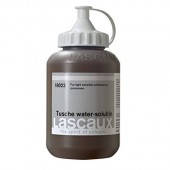
Lascaux Tusche Water-Soluble
£39.90This viscous tusche can be painted in a smooth even layer which can be scratched away to create delicate non-printing lines. It can also be used for a broad range of painted marks, offsetting and pattern-making. The diluted tusche dries to create granular washes that are full of character. Dry marks can be re-wet and altered if required. 500ml. Learn More -
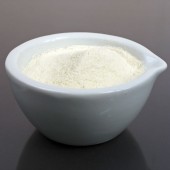
Gum Sandarac
Starting at: £8.60
Gum Sandarac, derived from a coniferous tree, is available in powdered or lump form. It can be dissolved in alcohol to create a varnish that is suitable as an isolating layer in oil painting and as a traditional top coat for egg tempera. It forms a brittle layer, so is only suitable for use on a rigid support. Another application is as a surface preparation for calligraphy; the ground gum can be dusted across a piece of prepared vellum or paper to create a resist, which shrinks ink strokes slightly, making them appear finer, with crisp edges. Learn More -
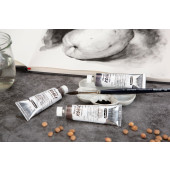
Schmincke Liquid Charcoal 15 ml
Starting at: £18.30
Liquid charcoal in the 15 ml tube - a clean, dust-free way of painting, charcoal drawing and underpainting with charcoal. The three pigments of natural origin used for this (PBK 8, pit black) are created by charring fruit seeds from the EU area and result in the following unique coal nuances: a neutral peach stone black - 18 757 a warm, brownish cherry pit black - 18 756 a cool, bluish grape seed black - 18 755 Due to the larger quantity of available paint, liquid charcoal can be used to quickly process large areas. The liquid charcoal contains the high-quality binder gum Arabic like traditional artists' watercolours (gouaches, watercolours, etc.), has a gouache-like consistency and can be diluted with water, so that different shades, structures and layer thicknesses can be achieved by different application. Depending on the substrate and the thickness of the layer, it can be wiped off by hand and removed with water. Used as thin underpainting (e.g. in oil painting), subsequent paints do not become dirty or become less dirty than with conventional charcoal underpainting due to the higher adhesion of the bound carbon pigments to the substrate. Of course, the liquid charcoal can be combined with drawing charcoal. The blurring and removability of the liquid charcoal depends on the surface of the substrate - the more even and firm the surface, the easier to change the application. Pre-tests are recommended. Learn More -
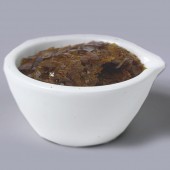
Lemon Shellac
Starting at: £8.20
Shellac is a natural resin that is deposited by the female lac insect on the branches of trees in India and Thailand. It is soluble with alcohol, but not with mineral spirits or turpentine. It forms a tough yet flexible film, with many applications. It is suitable as a top coat for gilding when applied thinly, a sealant for porous surfaces, an isolating layer for tempera paintings, a base for pigmented inks, a protective layer for collograph plates, and a warm varnish for wooden floors and furniture. As it is prone to darkening with age, it is not recommended as a varnish for oils, and its solubility can reduce over time. There are various grades of shellac. When mixed with alcohol, it may initially form a cloudy mixture, due to traces of wax in the shellac, but this should become clear once it has dried. The highest grades of shellac are Clear Dewaxed Shellac, which has been de-coloured using the carbon filtering method, Lemon Shellac, and Orange Shellac, which are pale in colour. Button Shellac is less refined and therefore produces a reddish varnish. It was, in fact, widely used as a red dye before synthetic dyes became available. Learn More -
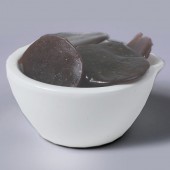
Button Shellac
Starting at: £8.40
Shellac is a natural resin that is deposited by the female lac insect on the branches of trees in India and Thailand. It is soluble with alcohol, but not with mineral spirits or turpentine. It forms a tough yet flexible film, with many applications. It is suitable as a top coat for gilding when applied thinly, a sealant for porous surfaces, an isolating layer for tempera paintings, a base for pigmented inks, a protective layer for collograph plates, and a warm varnish for wooden floors and furniture. As it is prone to darkening with age, it is not recommended as a varnish for oils, and its solubility can reduce over time. There are various grades of shellac. When mixed with alcohol, it may initially form a cloudy mixture, due to traces of wax in the shellac, but this should become clear once it has dried. The highest grades of shellac are Clear Dewaxed Shellac, which has been de-coloured using the carbon filtering method, Lemon Shellac, and Orange Shellac, which are pale in colour. Button Shellac is less refined and therefore produces a reddish varnish. It was, in fact, widely used as a red dye before synthetic dyes became available. Learn More -
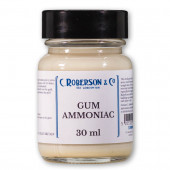
Roberson Gum Ammoniac
Starting at: £14.00
Natural gum size made to a traditional recipe. Gum Ammoniac is useful for gilding in small areas and, more generally, in detailed gilding. Two applications are needed if gilding on absorbent paper. Raised areas can be developed by using several layers and allowing each layer to dry first. Gum Ammoniac can be reactivated by breathing on the gum surface. Gum Ammoniac comes to us from Asia and is increasingly hard to source. Learn More -
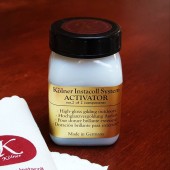
Instacoll Gilding System
Starting at: £6.85
Kölner Instacoll is a two-part system, consisting of a base coat and activator, that can be used on nearly all suitably prepared substrates to create weather-resistant, high gloss interior and exterior gilded surfaces. The Instacoll Tool is a double-ended tool with shaped tips made of elastic rubber, designed for pressing gold and silver transfer leaf into indentations when gilding uneven surfaces. The Instacoll Chiffonnette is an extra soft, lint-free cloth, used for polishing and burnishing surfaces gilded with Instacoll. *PLEASE NOTE - COLOURS OF THESE PRODUCTS MAY VARY SLIGHTLY FROM PRODUCTS PICTURED* Learn More -
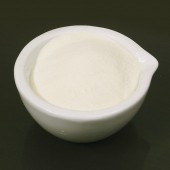
Casein Lactic
Starting at: £15.95
Casein is a protein derived from dried milk, which has been used in painting since ancient times. It can be combined with Ammonium Carbonate to form an emulsion, which acts as a durable, non-resoluble binder for pigments, producing a matte, fast-drying paint, similar in appearance to egg tempera. We use casein as a binder for our L. Cornelissen & Son Pigment Colour Charts, as it is a medium that clearly showcases the characteristics and behaviour of each pigment in its pure form. Casein paints can be applied in thin layers to watercolour paper, but would require a more rigid support, such as a gesso panel, to be applied thickly, as the comparative inflexibility of the paint layer means that it can be prone to cracking. Subsequent layers of paint should be more diluted to aid adhesion, and impasto effects are not recommended. It is possible to varnish casein paintings using an acrylic or damar varnish to obtain a glossy surface if desired, although this is not a necessary step. Casein can also be used as an ingredient in gesso, and is a suitable binder for fresco secco techniques.
Some pigments may require a wetting agent in order to fully disperse within the binder, in which case alcohol may be used.
Learn More -
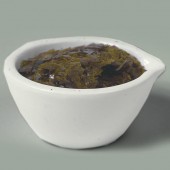
Clear Dewaxed Shellac
Starting at: £9.20
Shellac is a natural resin that is deposited by the female lac insect on the branches of trees in India and Thailand. It is soluble with alcohol, but not with mineral spirits or turpentine. It forms a tough yet flexible film, with many applications. It is suitable as a top coat for gilding when applied thinly, a sealant for porous surfaces, an isolating layer for tempera paintings, a base for pigmented inks, a protective layer for collograph plates, and a warm varnish for wooden floors and furniture. As it is prone to darkening with age, it is not recommended as a varnish for oils, and its solubility can reduce over time. There are various grades of shellac. When mixed with alcohol, it may initially form a cloudy mixture, due to traces of wax in the shellac, but this should become clear once it has dried. The highest grades of shellac are Clear Dewaxed Shellac, which has been de-coloured using the carbon filtering method, Lemon Shellac, and Orange Shellac, which are pale in colour. Button Shellac is less refined and therefore produces a reddish varnish. It was, in fact, widely used as a red dye before synthetic dyes became available. Learn More -
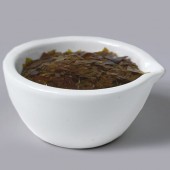
Orange Shellac
Starting at: £8.00
Shellac is a natural resin that is deposited by the female lac insect on the branches of trees in India and Thailand. It is soluble with alcohol, but not with mineral spirits or turpentine. It forms a tough yet flexible film, with many applications. It is suitable as a top coat for gilding when applied thinly, a sealant for porous surfaces, an isolating layer for tempera paintings, a base for pigmented inks, a protective layer for collograph plates, and a warm varnish for wooden floors and furniture. As it is prone to darkening with age, it is not recommended as a varnish for oils, and its solubility can reduce over time. There are various grades of shellac. When mixed with alcohol, it may initially form a cloudy mixture, due to traces of wax in the shellac, but this should become clear once it has dried. The highest grades of shellac are Clear Dewaxed Shellac, which has been de-coloured using the carbon filtering method, Lemon Shellac, and Orange Shellac, which are pale in colour. Button Shellac is less refined and therefore produces a reddish varnish. It was, in fact, widely used as a red dye before synthetic dyes became available. Learn More -
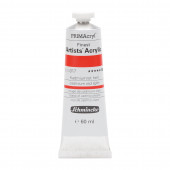
Schmincke PRIMAcryl 60ml
Starting at: £7.60
[ONLY AVAILABLE ONLINE] Schmincke PRIMAcryl is a high viscosity premium acrylic range of 84 premium shades. Artists quality high pigment content gives all the shades a new dimension of brilliance and expressiveness. The titanium white is unparalleled. It's high pigmentation, opacity and cover rate enables incredibly brilliant mixtures. No colour shift between the wet and dry states. High lightfastness level either 4 or 5 stars indicates the quality of these premium acrylic paints. All colours do not yellow and the dried paint layers are durable, flexible and water resistant. *Please note, this range is stored offsite. Please allow extra time for your order to be processed and dispatched. Learn More -
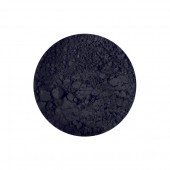
Ivory Black Pigment
Starting at: £4.50
Ivory Black is a natural pigment of impure carbon, derived from charred animal bones. It is semi-transparent, very lightfast, and offers good tinting strength. It is a particularly slow-drying pigment, which forms a soft, rather brittle paint film in oil.
Compared to other blacks, such as Vine Black, Ivory Black possesses warmer, brownish undertones. It should not be used at full-strength in an underpainting, as subsequent layers are likely to crack. Otherwise, it is a very useful all-purpose black for many types of paint, excluding mortar, fresco or cement.
Toxicity: B
Learn More -
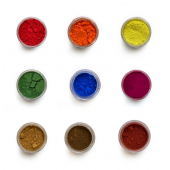
-
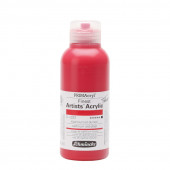
Schmincke PRIMAcryl 250ml
Starting at: £25.30
ONLY AVAILABLE ONLINE[]. Schmincke PRIMAcryl is a high viscosity premium acrylic range. Artists quality high pigment content gives all the shades a new dimension of brilliance and expressiveness. The titanium white is unparalleled. It's high pigmentation, opacity and cover rate enables incredibly brilliant mixtures. No colour shift between the wet and dry states. High lightfastness level either 4 or 5 stars indicates the quality of these premium acrylic paints. All colours do not yellow and the dried paint layers are durable, flexible and water resistant. *Please note, this range is stored offsite. Please allow extra time for your order to be processed and dispatched. Learn More -
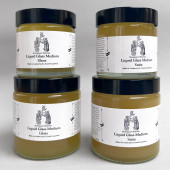
Liquid Glass Mediums
Starting at: £19.50
Call to Order
Renaissance Materials by Dr. David Cranswick.
A thick glazing medium of the 'Old Masters'. Liquid Glass Mediums facilitate building up layers of transparent glaze. Gloss or Satin.
Contains: Damar resin, linseed oil and beeswax (for Satin medium only)
Learn More -
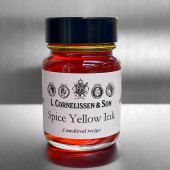
Cornelissen Historical Inks, Spice Yellow Ink 30ml
£6.50A luscious sunshine yellow that can be layered to produce deeper shades. As a blend of organic dyes derived from saffron and turmeric, this ink is not fully lightfast. Unlike other inks in this range, it has a granulating texture that displays the individual colour particles.
Learn More -

London Pigment, Verdigris Ink, 20 ml
£12.50Ink made from pure copper metal leaf that has reacted with distilled vinegar. Learn More -
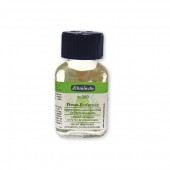
Schmincke Varnish Remover
Starting at: £9.45
Varnish remover. For softening old varnish and colour layers. Strong solvent should be used by experienced persons only. Learn More -
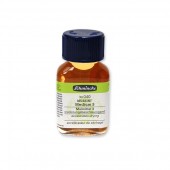
Schmincke Mussini Oil Medium 3
Starting at: £9.45
Highly siccative painting medium. Dries on the palette with 40 minutes. Use sparingly to prevent gloss.
From the Schmincke website:
Medium for oil colours rich in resin (“lean”). Accelerates drying; increases gloss and depth; makes the colour layers more resistant. Close immediately after use. Dosage: 10% to 20%.
Contains: aldehyde resin, mineral spirit, siccative, stand oil.
Learn More -
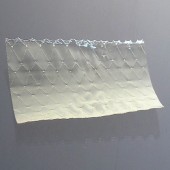
Gelatine Leaf
Starting at: £5.30
A pure form of glue from animal tissue. Used for sizing paper. Used in gliding and for weak sizes in isolating layers in tempera painting. Learn More -
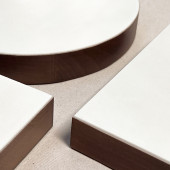
-
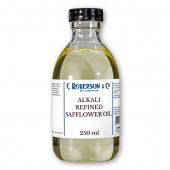
Roberson Safflower Oil
Starting at: £7.70
Safflower Oil is light-coloured, making it suitable for grinding pale pigments. It is still sometimes used as a binder for commercially available paints, although due to its very slow drying time it is best reserved for the final layers of a painting. Compared to Linseed oil, Safflower Oil will give a matte finish.
Learn More -
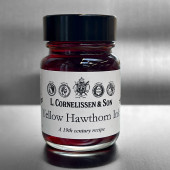
Cornelissen Historical Inks, Yellow Hawthorn Ink 30ml
£6.50Made from organic hawthorn berries collected from Cambridgeshire, this bright, warm yellow ink can be layered in order to produce deeper shades. It is not fully lightfast or waterproof due to the presence of organic materials.
Not suitable for fountain pens. Learn More -
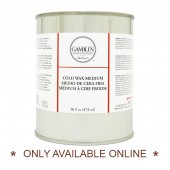
Gamblin Cold Wax Medium
Starting at: £12.60
* Only available online.* Cold Wax medium is made by Gamblin. They say:
"Cold Wax medium is made from naturally white, pure beeswax. Formulated to knife consistency, Cold Wax Medium makes oil colours thicker and more matte. Cold Wax Medium can be used to make Gamblin mediums and Gamvar more matte. It can also be applied alone as a matte varnish."
Please see below for more information.
Learn More -
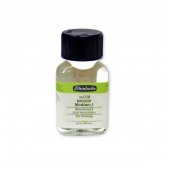
Schmincke Mussini Oil Medium 1
Starting at: £9.45
From the Schmincke website:
Low-fat (“lean”) painting and thinning medium for oil colours. Recommended for thin grounds and to create transparent layers over gouache, tempera and acrylic paintings; thins without hardly affecting the drying time and gloss. Dosage: 10% to max. 20%
Contains: Safflower oil, natural and synthetic resins, mineral spirit.
Learn More -

Roberson Poppy Oil
Starting at: £10.20
Poppy Oil is a slightly later addition to the artist's cabinet than Linseed Oil and Walnut Oil. It is generally used as a binder for pale colours, where the warmth of Linseed Oil is not desired. It provides a matte finish and dries very slowly, so we would not advise using it in conjunction with slow-drying pigments or in underpaintings. A paint film produced by Poppy Oil is weaker and softer than that created by Linseed Oil. This is because it contains a smaller percentage of linolenic acid than Linseed Oil; this substance imparts both strength and yellowness to an oil.
Although some of these properties can be perceived as drawbacks, paints made with Poppy Oil generally obtain a "short" or buttery texture without the addition of waxes or other additives, which can be an advantage for certain colours that produce poor consistencies in Linseed oil alone. Sometimes, the addition of a small quantity of Poppy Oil when grinding a tricky or "stringy" pigment in Cold Pressed Linseed Oil can introduce some of benefits of Poppy Oil, without transmitting its negative characteristics.
Paints made with Poppy Oil are particularly suited to "alla prima" working methods, where paint is applied spontaneously. When working in successive layers, Poppy Oil would only be appropriate for the final stages of a painting.
Learn More -
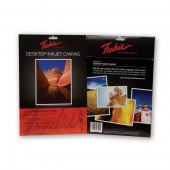
Fredrix Inkjet Canvas Pack
Starting at: £16.90
Call to Order
340GSM, A4, 10 Sheets, Poly-Cotton Blend. Learn More




